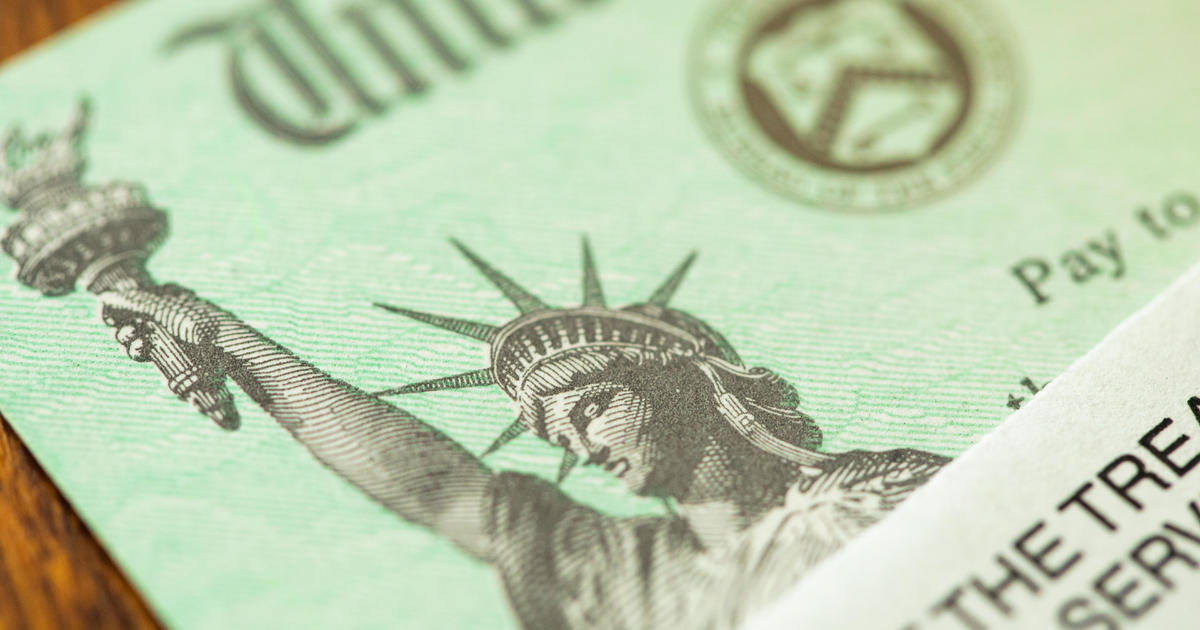WASHINGTON — The Internal Revenue Service today continued an ongoing effort to help those experiencing homelessness by reminding people who don’t have a permanent address or a bank account that they may still qualify for stimulus payments and other credits, including the advance Child Tax Credit.
The agency is also asking for help from groups that assist vulnerable or underserved people who may have difficulty getting a stimulus payment automatically. Filing a 2020 tax return, even if people don’t have to, could put money in their pocket.
While the third round of Economic Impact Payments continue to be made automatically to most eligible people, the IRS can’t issue a payment to eligible Americans when information about them isn’t available in the tax agency’s systems.
To help people experiencing homelessness, the rural poor and other historically underserved groups, the IRS urges community groups, employers and others to share information about Economic Impact Payments, the upcoming advance Child Tax Credit and other tax details to help more eligible people file a tax return so they can receive everything to which they’re eligible.
Advance Child Tax Credit: Payments begin soon
The IRS and the U.S. Department of the Treasury announced earlier this week that the first monthly payment of the expanded and newly-advanceable Child Tax Credit (CTC) from the American Rescue Plan will be made on July 15. Roughly 39 million households—covering 88% of children in the United States—are slated to begin receiving monthly payments without any further action required.
IRS and Treasury also announced the increased CTC payments will be made on the 15th of each month unless the 15th falls on a weekend or holiday. Families who receive the credit by direct deposit can plan their budgets around receipt of the benefit. Eligible families will receive a payment of up to $300 per month for each child under age 6 and up to $250 per month for each child age 6 and above.
The American Rescue Plan increased the maximum Child Tax Credit in 2021 to $3,600 for children under the age of 6 and to $3,000 per child for children between ages 6 and 17. The American Rescue Plan is projected to lift more than five million children out of poverty this year, cutting child poverty by more than half.
Households covering more than 65 million children will receive the monthly CTC payments through direct deposit, paper check, or debit cards, and IRS and Treasury are committed to maximizing the use of direct deposit to ensure fast and secure delivery. While most taxpayers will not be required to take any action to receive their payments, Treasury and the IRS will continue outreach efforts with partner organizations over the coming months to make more families aware of their eligibility.
How to help
The IRS urges community groups, employers and others to share information about the Child Tax Credit, Economic Impact Payments and other key programs to help more eligible people file a tax return so they can receive everything to which they’re eligible. IRS.gov has a variety of information and tools to help people.
Economic Impact Payments, also known as stimulus payments, are different from most other tax benefits; people are eligible for the payments even if they have little or no income and even if they don’t usually file a tax return. This is true as long as they have a Social Security number and are not being supported by someone else who can claim them as a dependent. For anyone who missed out on the first two rounds of payments, it’s not too late.
However, filing a 2020 tax return is the only way, if they’re eligible, to get the money from the first or second payment now. People will need to claim the 2020 Recovery Rebate Credit. Most people who don’t usually file can use IRS Free File to provide very basic information. There’s even a special section on IRS.gov that can help: Claiming the 2020 Recovery Rebate Credit if you aren’t required to file a tax return.
When the individual answers the questions in Free File, they may also find that they’re eligible for other tax credits which may mean a bigger refund. The IRS will process the tax return and issue a refund. The individual can expect two payments because the 2020 Recovery Rebate Credit is paid as part of the tax refund. After the refund is issued, if they’re eligible, they’ll get another payment shortly afterward for the third Economic Impact Payment.
For the third round of payments, people who are experiencing homelessness may qualify to receive $1,400 for themselves. If they are married or have eligible dependents, they can get an additional $1,400 for each of their family members.
Filing a 2020 federal income tax return that provides very basic information about the person is something that can be done electronically using a smartphone or a computer. When the IRS receives the return, it will automatically calculate and issue the Economic Impact Payments to eligible individuals. People do not need a permanent address or a bank account. They don’t need to have a job. For eligible individuals, the IRS will still issue the payment even if they haven’t filed a tax return in years.
Permanent address not required
People can claim the Recovery Rebate Credit or other credits or get a third Economic Impact Payment even if they don’t have a permanent address. For example, someone experiencing homelessness may list the address of a friend, relative or trusted service provider, such as a shelter, drop-in day center or transitional housing program, on the return filed with the IRS. If they are unable to choose direct deposit, a check or debit card for the tax refund and the third Economic Impact Payment can then be mailed to this address.
For those with no bank account
Many financial institutions will help a person lacking an account to open a low-cost or no-cost bank account. Individuals who open accounts will then have an account and routing number available if they file and request a direct deposit of the Economic Impact Payment.
Visit the Federal Deposit Insurance Corporation (FDIC) website for details, in both English and Spanish, on opening an account online. Among other things, people can use the FDIC’s BankFind tool to locate a nearby FDIC-insured bank. In addition, BankOn, the American Bankers Association, Independent Community Bankers of America and the National Credit Union Administration have all compiled lists of banks and credit unions that can open an account online.
For veterans, see the Veterans Benefits Banking Program (VBBP) for access to financial services at participating banks.
People with a prepaid debit card may be able to have their refund applied to the card. Many reloadable prepaid cards or mobile payment apps have account and routing numbers that can be provided to the IRS. Individuals would need to check with the financial institution to ensure the card can be used and to obtain the routing number and account number, which may be different from the card number.
Workers experiencing homelessness can also receive the EITC
A worker experiencing homelessness might also qualify for an Earned Income Tax Credit (EITC). To get the credit, federal law requires that a worker live in the U.S. for more than half of the year and meet other requirements. This means living in a home in any of the 50 states or the District of Columbia. Therefore, individuals experiencing homelessness, including those who reside at one or more homeless shelters, can meet that requirement.
More details on the Earned Income Tax Credit
For people experiencing homelessness who have a job, filing a return often carries an added bonus—getting a refund based on various tax benefits, especially the EITC for low-and moderate-income workers and working families.
Like many other workers, some workers experiencing homelessness still qualify for the credit even if they earned too little income during 2020 to owe tax. For 2020, the income limit is $15,820 for singles with no children ($21,710 for couples with no children). The income limit is higher for people with children. For example, the limit is $50,594 for singles with three or more children ($56,844 for couples with three or more children). Those who make less must also meet other eligibility requirements.
Because it’s a refundable credit, those who qualify and claim the credit could pay less federal tax, pay no tax or even get a tax refund. The EITC can put up to $6,660 into a worker’s pocket. The amount varies depending upon the worker’s income, filing status and other factors.
The IRS recognizes that eligible workers experiencing homelessness often encounter unique challenges not faced by other people.
To find out if they’re eligible, people can use the EITC Assistant on IRS.gov. It’s available in both English and Spanish.
File for free
The fastest and easiest way to claim the 2020 Recovery Rebate Credit and Earned Income Tax Credit (EITC) or to get the third Economic Impact Payment is to file a return electronically using IRS Free File. People can use a smartphone or computer to visit IRS.gov.
Through the Free File system, anyone who qualifies for the EITC also qualifies to use brand-name software to prepare and electronically file their return for free. The IRS urges anyone experiencing homelessness who has a smartphone or access to a computer to take advantage of this service.
Direct deposit speeds payments
Direct deposit is the safest and fastest way to receive a refund and the third Economic Impact Payment. People will need to include direct deposit information on their 2020 tax return to get their payment directly deposited.
Anyone with a savings, checking or brokerage account can choose to have their refund electronically deposited in that account. Taxpayers can also purchase U.S. Savings Bonds with their refund. Direct deposit is available even for people who file a paper tax return, but processing of paper returns takes longer.
Help spread the word
Employers can help by making their employees aware of the third Economic Impact Payment, 2020 Recovery Rebate Credit and Earned Income Tax and Child Tax Credit, and by encouraging them to file for these benefits based on tax year 2020 rules. In addition, the American Rescue Plan, enacted in March 2021, expands EITC and the Child Tax Credit benefits for the 2021 tax year.
Some people will be able to get advance payments of the Child Tax Credit later this year. There is nothing those who qualify need to do at this point other than file a 2020 tax return.
The IRS also continues to work extensively with community groups across the country to get people to file tax returns and receive all the Economic Impact Payments and credits they’re entitled to. These efforts helped lead to more than 8 million people last year to submit tax returns who normally don’t file.
For more information, check out the outreach material, available on IRS.gov.
Source: IRS – R-2021-116, May 19, 2021




